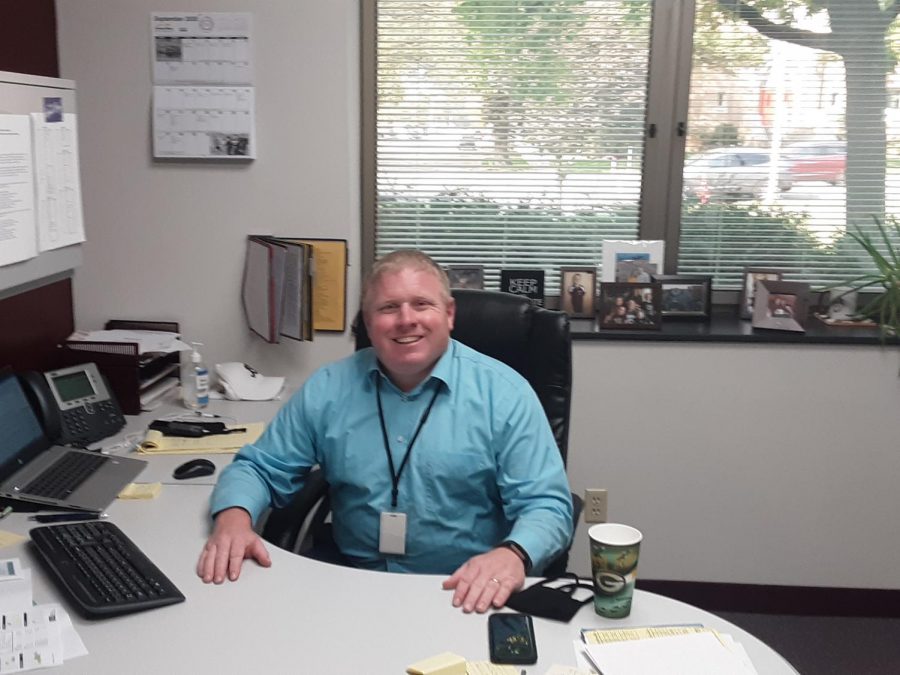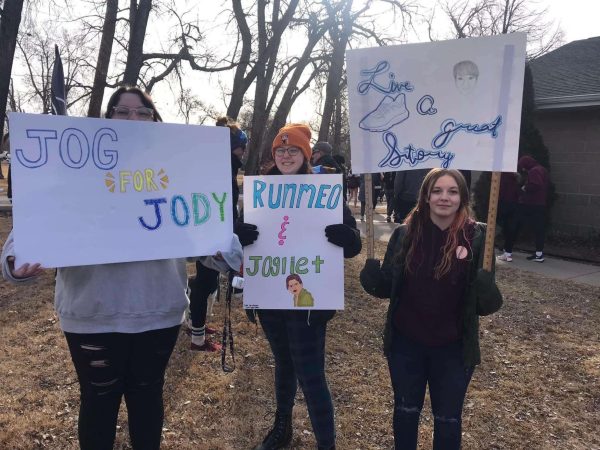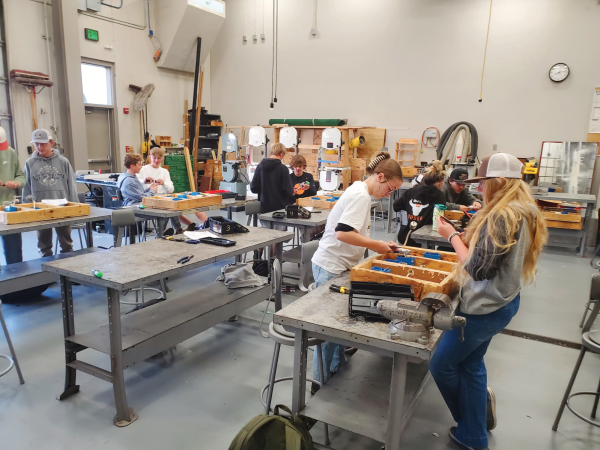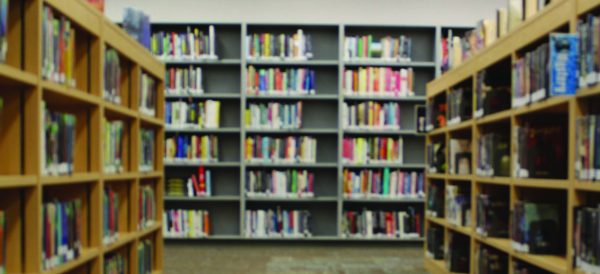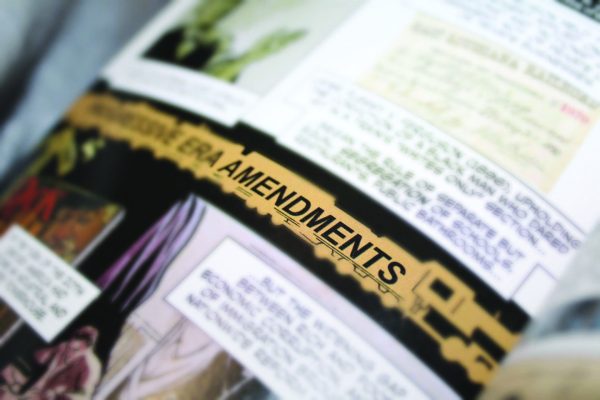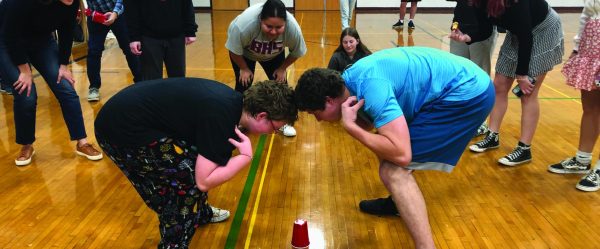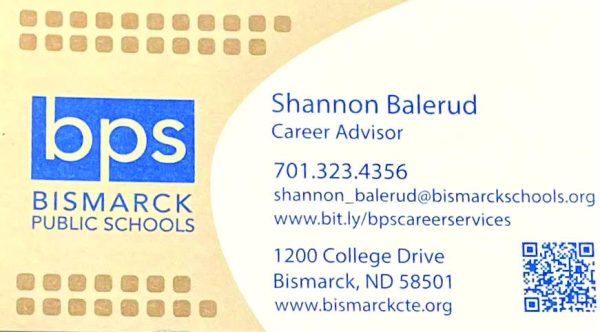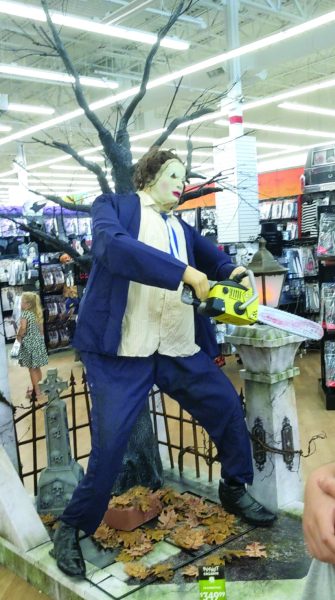Education during a pandemic
A switch to complete online learning is still a viable option for the Bismarck Public Schools District.
Staying informed. Principle David Wisthoff has seen the effects of the precaution measures and is eager to use these to reopen schools. This past spring, BHS was completely online and excluded from in-person learning. “If we come back full go, with the current interpretation that masks will be worn when 6 foot distancing can’t be maintained, you will most likely have to wear those all day,” Wisthoff said.
The way schools will be scheduled and taught has been debated across the country for several months. The Bismarck Public Schools District decided that hybrid learning was the best option for the current situation. However, with numbers rising in the Bismarck-Mandan area, going completely online might still be an option.
Assistant Principal Lynette Johnson was a part of some of these discussions, and whether or not it is completely in-person or hybrid, Johnson wants learning to continue on.
“I am just happy to see students in the building again, and I know most of us are just glad to finally be back and learning again,” Johnson said.
Principal David Wisthoff has been in collaboration with the NDDH and the Bismarck Public School district to discuss the coming months and possibilities of the next quarter.
“Burleigh county has a say in it – we have a say in it – so there’s a lot of moving pieces,” Wisthoff said. “I don’t know what the reaction will be when we say we are coming back from the District. So we will have the elementary come back on the 29th, and it will be a full go.”
One of the precautions that came with going back to school was contact tracing cases of students with whom they sat next to. Students can be taken out of school if they are within 6 feet of someone for more than 15 minutes.
“If we come back full time, that’s the part that gets difficult,” Wisthoff said. “We are now, in most of our classrooms, distanced for 6 feet. We can get that in most, but not all of them, because when we come back with 1,200 kids, it’s hard to meet that social distancing guideline. So you will see more contact tracing and one positive classmate may take out more classmates. Test or no test, you will still have to quarantine for two weeks because you can still transmit it up to 14 days after exposure. So we are just following the guidelines of the North Dakota Health Department.”
During the spring of 2020, BPS made the decision to go completely online. However, with the possibility of that happening again in the fall, changes are expected to be made as far as the engagement goes.
“We know last spring was certainly [not optimal]. Our goal is to not get back to that spot, hence the reason for hybrid,” Wisthoff said. “So far it has gone very well as far as our cases go and numbers go. That’s why you will see elementary schools go back, and our hope is that we can go back once we take a look at some large schools going back and just compare numbers so that we don’t want to go back to peer distance for everyone. It would be more synchronous learning, and you would have to log on and engage with your teacher. We know that we didn’t get everyone through the curriculum, but we feel we are in a much better spot now.
With county numbers continuing to climb, this can affect decisions made by the BPS under Health Department guidelines. These decisions could possibly lead to another few weeks of online school. The color status guide determines what precautions need to be taken.
“If we got shut down and put on orange or red, I don’t know if sports would be on the table anymore,” Wisthoff said. “Green and blue is where you want to be. That’s where we are back in person. Yellow is the hybrid, and orange is shutdown and distance learning, but kids can still come in. And red is where we were back in the spring when we are shut down completely. The county numbers aren’t great, but if you look at the data on BPS website for just BHS, it shows us that [hybrid learning] is working. We look at more percentages, and we don’t have a set percentage, but there is a district COVID task force. They look at the numbers for each school, and so that district committee will make those recommendations for just our school.”
The expectation for the next coming months is that BPS is hopeful that the schools can be back to full time by the end of the first quarter. However, there would still be certain measures enforced to stop the spread of COVID-19.
“It’s really hard right now to predict. I would like to say we are going to get back here and be a full go [next quarter],” Wisthoff said. “But really, we need the numbers to calm down a little bit and see how the elementary schools go. I think hybrid was a good place to start. I think there was a lot of anxiety from students and teachers of what it would look like when we are all crammed in here. But when we cut down on class size, that makes a big difference.”
As the school year progresses, it is likely that students and staff can see the restrictions set in the fall will be the deciding factor in how students go to class for the remainder of the year.
“We operate with the guidelines we are given, and you can see there is a lot of controversy around masks,” Wisthoff said. “But our spread between students within the school is very good. We have had kids that have had to quarantine, but we are not seeing the case of those same students forcing other groups to quarantine. It could be because of masks or social distancing but either way. I am really happy with the progress we are making.”
.
Your donation will support the student journalists of Bismarck High School. Your contribution will allow us to purchase equipment and cover our annual website hosting costs.

Scott enjoys playing in the band as well as participating in Track and Field. Scott has also self-boosted his career with his own lawn mowing business.

